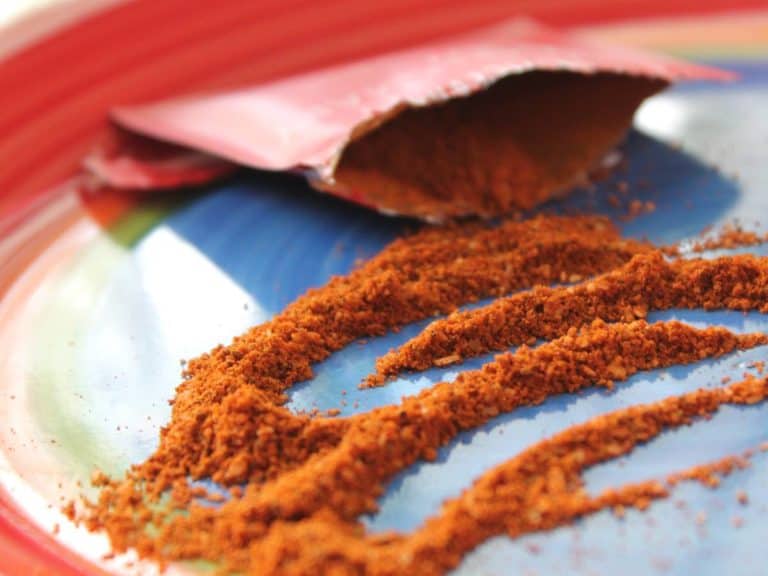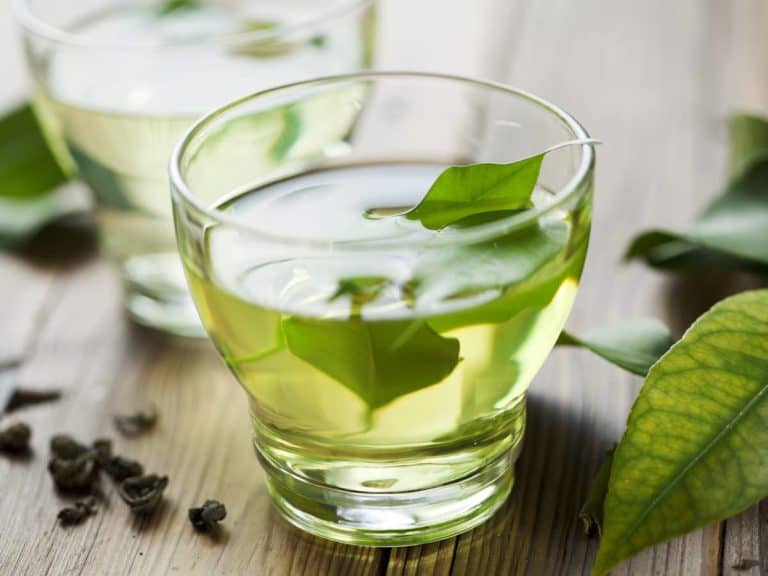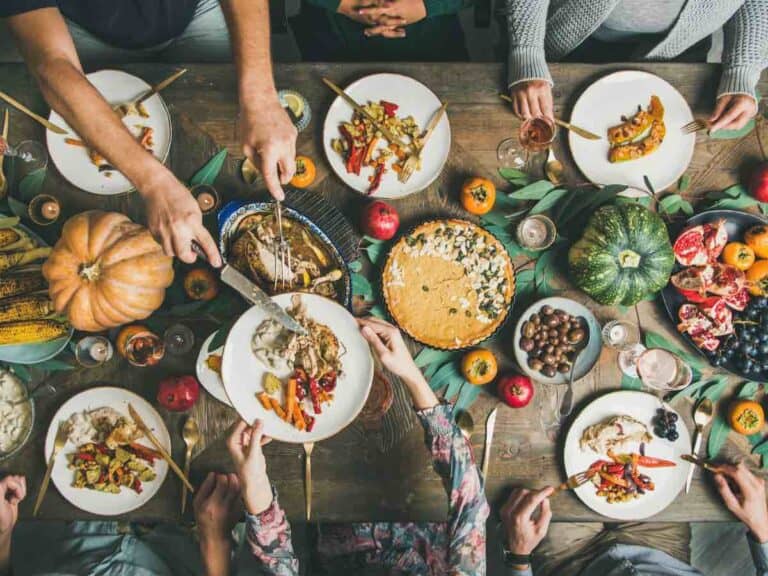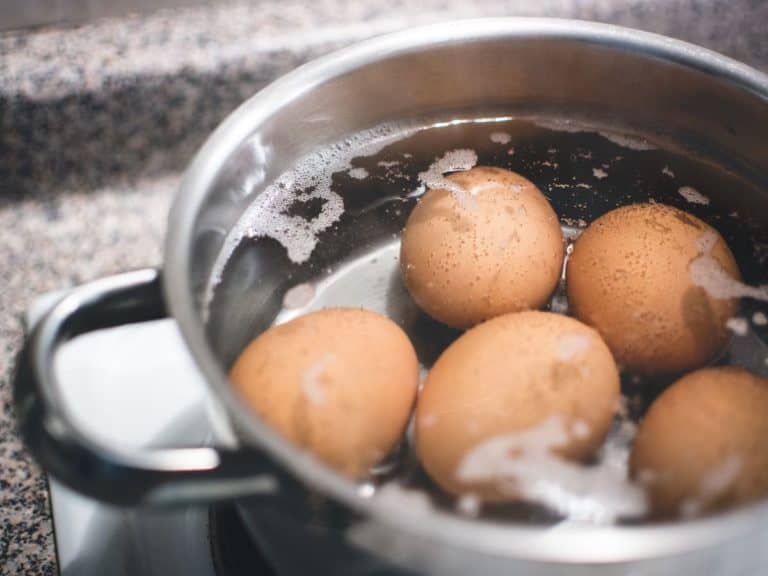Boiling Shrimp: Peeled, Frozen, Raw, etc.
One of the quickest ways to enjoy shrimp is by boiling them with the shell and all. But peeling them beforehand lets you serve them on the table ready to be dipped in sauce and eaten. And that is why you may be wondering if you can peel those shrimp before you dunk them in a pot of boiling water.
Peeled shrimp can be boiled. As a matter of fact, they can be boiled whether completely thawed or fresh from the freezer. However, many people prefer to boil shrimp with the shell intact. That’s because the shell adds a lot of flavor to the flesh. The shell also tends to make shrimp plumper when cooked.
In this post, I will answer some of your most pressing questions about boiling shrimp.
You will realize that the rules for boiling shrimp are simple no matter if you prefer to cook them peeled or with the shell on or just taken out of the freezer or perfectly thawed.
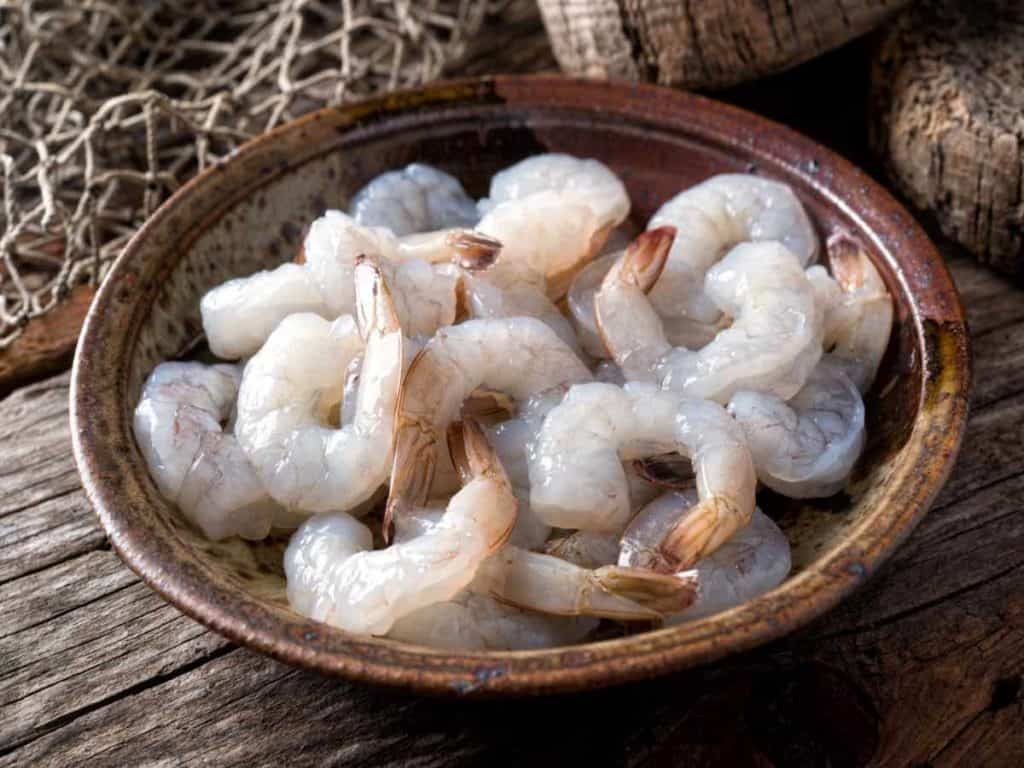
How Long Do You Boil Raw Shrimp?
Raw shrimp should be boiled for about 2 minutes — sometimes up to 3 minutes, depending on the size of the shrimp. Shrimp is already cooked when pink and with some red and no longer opaque. It’s time to remove shrimp in boiling water when already in a loose “C” shape rather than a tight one.
It’s important to boil shrimp properly in order to have the right taste and flavor.
Failure to boil shrimp long enough runs your risk of consuming shrimp that’s undercooked and potentially contaminated with bacteria or viruses that can give you food poisoning, which could be deadly in severe cases.
How Do You Boil Shrimp Without Overcooking?
Using a kitchen timer can help keep shrimp from being overcooked while boiling them. It’s also recommended to fill a large bowl with water and some ice. After boiling shrimp for about two minutes, they should be transferred to the iced water in order to keep them from cooking further.
Because it only takes a couple of minutes to boil shrimp to perfection, it’s a good idea to focus solely on the shrimp being boiled until they are cooked and attend to your other kitchen tasks after.
Overcooked shrimp is tough and chewy. On the other hand, undercooked shrimp is rubbery.
How Do You Boil Shrimp With Old Bay?
To boil a pound of peeled shrimp with Old Bay, 1 cup of water, 1/2 cup of apple cider vinegar and 1/2 cup of Old Bay should be combined in a pot and brought to a boil. The shrimp should then be boiled in the mixture for about 2 minutes or until the flesh is already pink and no longer opaque.
Old Bay is a popular seasoning that’s manufactured by McCormick. Instead of the said product, you may combine equal amounts of paprika and celery salt and add a little cayenne pepper, black pepper, ginger and cinnamon powder.
Rather than apple cider vinegar, beer may be used in order to add bright notes as well as to season shrimp.
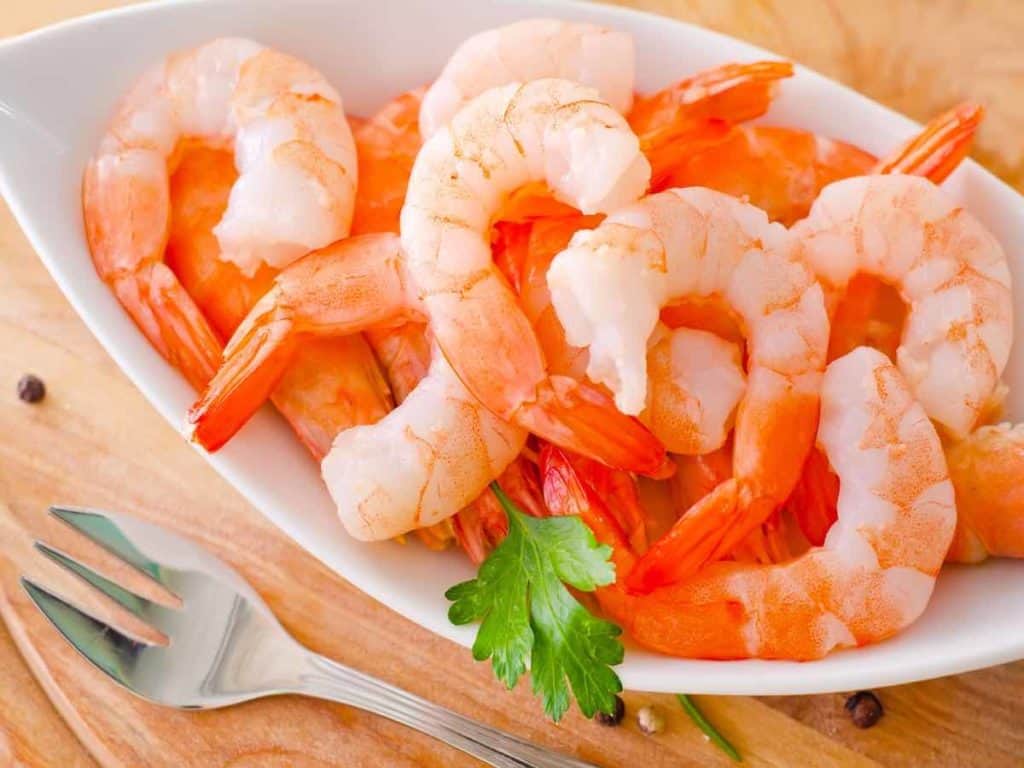
Is Undercooked Boiled Shrimp Bad for You?
Consuming undercooked shrimp, whether boiled or cooked any other way, may not be safe. That’s because shrimp may be contaminated with bacteria or viruses that could lead to illness or even death, health experts say. However, it’s safe to eat raw shrimp that’s sushi grade and handled and prepared properly.
Like many seafood, shrimp can carry all kinds of dangerous chemicals, contaminants and microorganisms.
Older adults, young children, pregnant women — all of these people should especially stay away from raw or undercooked shrimp as they are at higher risk of winding up ill as a result of compromised immune systems.
Read Also: What Color Should Shrimps Be When Cooked
Is It Easier to Peel Shrimp Raw or Cooked?
Shrimp can be peeled either cooked or raw. However, for many people, peeling cooked shrimp is easier. In order to be able to peel raw shrimp easier, they should be peeled while not completely thawed and the flesh is still firm. The steps to peeling shrimp raw are the very same steps to peeling shrimp cooked.
Whether you prefer to peel shrimp while still raw or when already cooked, the process is the same.
All you have to do is pull off the legs and, using your thumbs, crack the shell open along the underside where the shell is softer. Pull off the shell — it’s up to you whether or not you will remove the tail.
Can You Boil Frozen Shrimp?
Frozen shrimp can be boiled without thawing beforehand. Because shrimp can go straight from the freezer to a pot of boiling water, making dinner can be a complete time-saver. Cooking frozen shrimp any other way, such as stir-frying, however, requires thawing for a few minutes for best cooking and texture.
One of the nicest things about boiling shrimp stored in the freezer is that there’s no thawing necessary.
In boiling water, the ice crystals will simply melt. But thawing shrimp is important if another mode of cooking is preferred because, in a pan, frozen shrimp will take 50% longer to cook than thawed shrimp.
Can You Freeze Boiled Shrimp?
Cooked shrimp can be frozen in order to extend the shelf life. However, cooked shrimp should be allowed to cool completely before keeping in the freezer. When properly stored, cooked shrimp will maintain the best quality anywhere from 10 to 12 months. Freezing shrimp while still raw, however, is better.
Besides refrigerating, cooked shrimp can also be frozen to extend the shelf life for up to about a year.
But to preserve shrimp for a long time while maintaining quality, it’s a good idea to freeze them raw. With the heads removed and the shells intact, raw shrimp can keep in the freezer for over a year.
Read Also: How to Steam Frozen Shrimp
Why is My Boiled Shrimp Mushy?
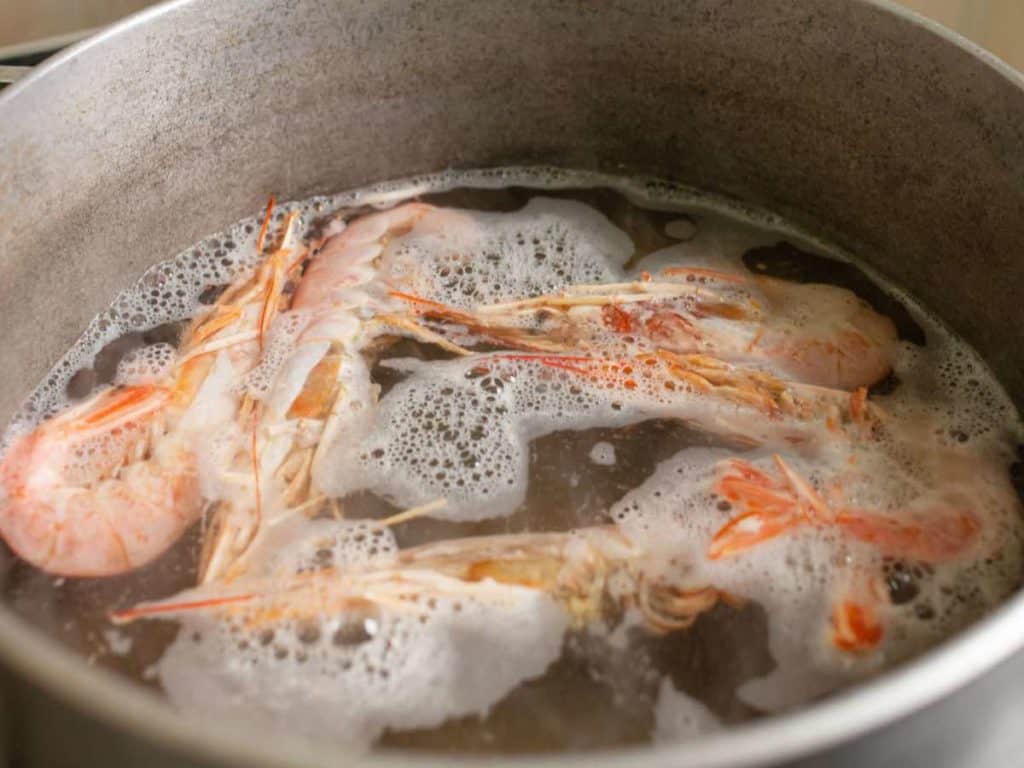
There are a couple of reasons why shrimp’s flesh can become mushy. First, the heads were left too long after the shrimp have died — an enzyme from the head breaks down and makes the flesh mushy. Second, the shrimp have absorbed a lot of water when being washed outside the bag or without a colander.
In order to prevent shrimp from becoming mushy before cooking or freezing, remove the heads immediately or buy shrimps with the heads already removed to delay the process of the flesh breaking down.
Shrimp should be washed under running water in a colander to keep them from being waterlogged.
How Do You Eat Boiled Shrimp?
Boiled shrimp served as a shrimp cocktail may be eaten with the fingers. This is especially true if the shrimp are large and the tails are still intact. However, those who do not want their fingers to smell like shrimp may use a knife and a sea fork or a small cocktail fork to eat boiled shrimp during a meal.
In a casual or laid-back setting where one is very much unlikely to be judged by his or her table manners, it’s perfectly fine to pick up shrimp with your clean fingers.
Typically, boiled shrimp is served with a sauce — dip the shrimp in it for a boost in flavor.

What Can You Eat With Boiled Shrimp?
As a main dish, boiled shrimp can be served and enjoyed with many things. Some popular choices include dinner rolls, steamed fresh vegetables, vegetable skewers, coleslaw, baked potatoes and sweet potato fries. Because of the versatility, others have boiled shrimp with pasta dishes and even mac and cheese.
Numerous different side dishes go with boiled shrimp, from wholesome ones to the more luscious kinds.
When it comes to wine, boiled shrimp is best paired with Riesling, Viognier or any other sweet wine or a more balanced one such as Cabernet Sauvignon. Boiled shrimp also goes with many sparkling wines.
Just Before You Peel and Boil Shrimp
Boiling peeled shrimp is not that difficult. As a matter of fact, it will only take you about 2 minutes to cook them in boiling water. Making it trouble-free to boil peeled shrimp is that you can cook them whether thawed or still frozen.
Related Questions
Are shrimp veins poop?
Despite what they’re called, shrimp veins aren’t veins. Instead, they are the intestinal tract of shrimp that collect waste materials. So, in other words, shrimp veins contain poop. Shrimp veins also filter sand or grit, which is why they are removed beforehand. However, it’s also perfectly fine to eat shrimp with the shrimp vein intact.
Is shrimp high in cholesterol?
Like many shelled seafood, shrimp is high in cholesterol. A dozen large shrimp packs 130 milligrams of cholesterol. People with no risk for heart disease should have no more than 300 milligrams of cholesterol per day, and those who have risk factors should limit their cholesterol intake to 200 milligrams a day or less.
Read Next: Is Shrimp Scampi Good For You?
